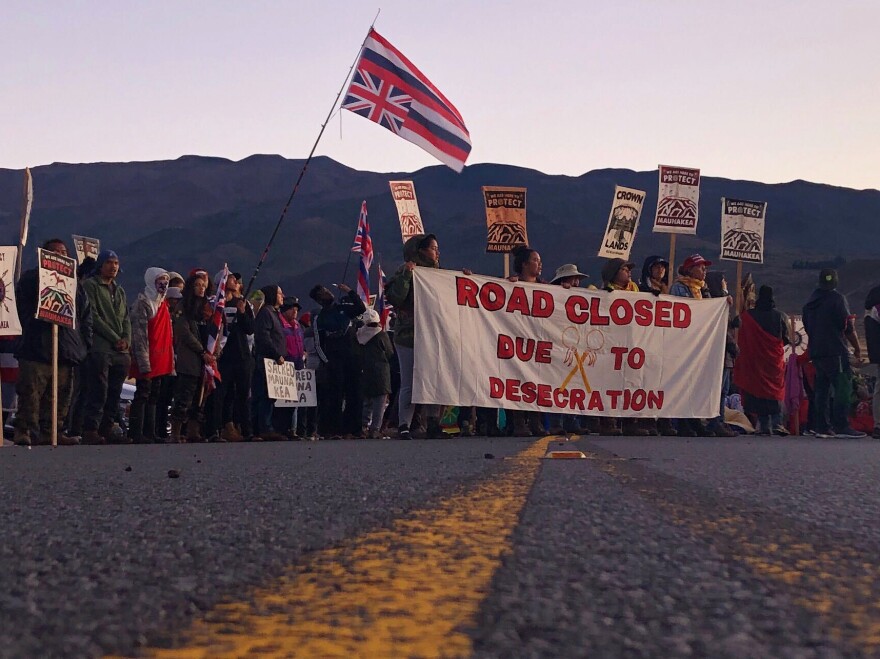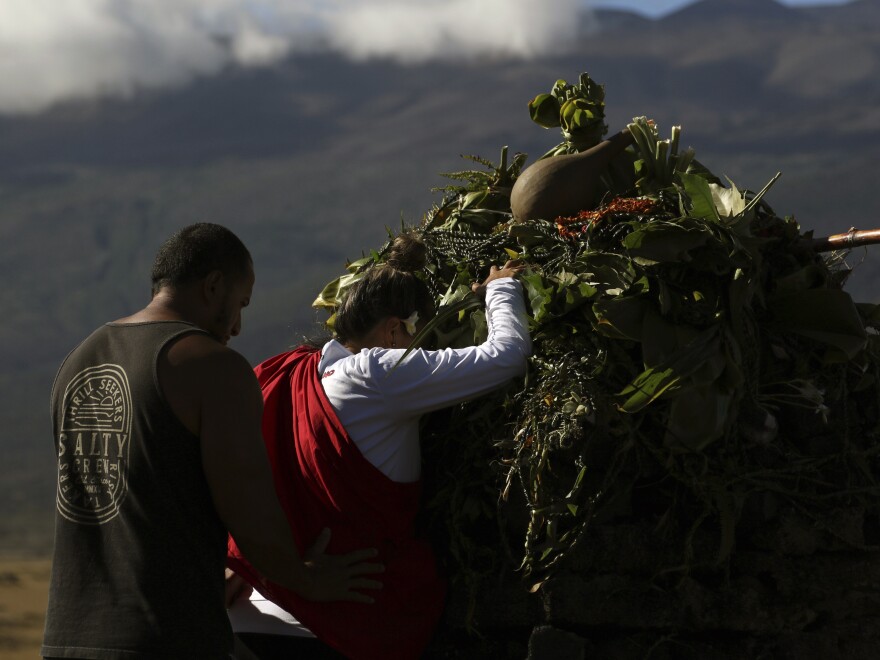The peak of Mauna Kea, a shield volcano on the Big Island of Hawaii, is one of the world's most remote places.
The mountain's flat shape, gentle winds, and low humidity make it perfect for watching the stars.
"You add it all up and Mauna Kea is arguably number one in the world as a site for locating telescopes," said Doug Simons, the director of the University of Hawaii's Institute for Astronomy.
The land on the mountain had been primarily administered by the university since the 1960s, but changes are on the way. A state law passed last month will transfer authority to a new stewardship authority composed of scientists, university officials and people in the local community.
The law is an important step towards ensuring the protection of Mauna Kea, a mountain native Hawaiians consider sacred, says Dr. Noe Noe Wong-Wilson, the executive director of the Lālākea Foundation, which aims to preserve the cultural practices and traditions of native Hawaiians.
"We do, to this day, believe that Mauna Kea, and the summit area in particular, is the place where the Earth Mother, or Papa, meets the Sky Father, Wākea," she said. "So all life begins at that point. And in our cosmology, and many of our ancient chants, Mauna Kea, the mountain, is the first born out of that union."
More than 11,000 acres of state-owned land on the mountain were leased to the University of Hawaii in 1968. This granted the university the right to use the land for scientific purposes, and to sublease land on the mountain to those wanting to build observatories on its peak. They've had control over managing the land there ever since.
There are now a total of 13 observatories on the mountain, with plans to decommission two of them to help reduce astronomers' footprint on the mountain.
But there are plans to add another, much bigger telescope already under way. The Thirty-Meter Telescope, or "TMT", named after the diameter of its primary mirror, would be one of the world's largest upon completion.
Scientists are excited about the new project, which was first granted a sublease on Mauna Kea in 2014. Its website says the new observatory would be able to provide images 12 times sharper than the Hubble Space Telescope and four times sharper than the new James Webb Space Telescope.
But there was strong opposition to its arrival.
Activists, including native Hawaiians and conservationists, protested the TMT multiple times between 2014 and 2019, saying its massive size could potentially spoil the land on Mauna Kea's already crowded summit.

Those protests, among other things, have stalled development on the project.
Wong-Wilson said native Hawaiians had been trying for decades to give their input on how the mountain — or mauna, in Hawaiian — should be managed, but their voices were often left unheard.
"Our plea was to consider the overall impact of all this development," Wong-Wilson said. "The decisions just never went our way."
There had been calls for changes to the management structure on the mountain, with many criticizing the University of Hawaii for its management. These re-emerged last year, with Hawaii House Speaker Scott Saiki making his position clear in a February address to the chamber.
"The University has tried to manage Mauna Kea, but for too long the University's work has been shrouded by its inability to appropriately manage cultural practices, resources and education," Saiki said. "This is why the University of Hawaii must no longer manage Mauna Kea and it should cease its work to extend the master lease."
University officials have acknowledged previous criticisms and apologized for them on multiple occasions, citing their continued commitment to protecting the mountain.
The result of those negotiations was a new bill, which proposed to create a new group tasked with managing the land: the Mauna Kea Stewardship and Oversight Authority. The 11-member panel would include representatives from the university, the observatories, and — most notably for Wong-Wilson — two seats for native Hawaiians.

"This new act is the first time that native Hawaiians, cultural practitioners, and the community really have an opportunity to sit at the decision-making table and help to govern this very important place," Wong-Wilson said.
The authority will begin to administer the mountain jointly with the University of Hawaii in 2023. Then the new body will fully take over in 2028.
One of the first things on its plate will be the negotiation of new land leases on the mountain for its existing observatories. The original lease granted to the University of Hawaii says that all telescopes must stop operating by the time the lease expires in 2033.

John O'Meara, chief scientist at the Keck Observatory on Mauna Kea, said that means the next few years will be crucial for astronomy in Hawaii.
Once it has full control over the mountain, the group will be tasked with negotiating new leases for the mountain's new and existing observatories to prevent them from being decommissioned.
Despite the uncertainty surrounding how negotiations will go, O'Meara said he thinks the creation of the new authority was a step in the right direction.
"I'm confident that astronomy can thrive in Mauna Kea and in Hawaii before 2033 and after," O'Meara said, "Because we're coming to a place of mutual stewardship — of everybody recognizing that it's the mauna at the center of this and not any one player."
How the authority will act depends on who gets appointed to serve as its members, a process that will be completed when the legislature reconvenes next year.
Copyright 2022 NPR. To see more, visit https://www.npr.org.




